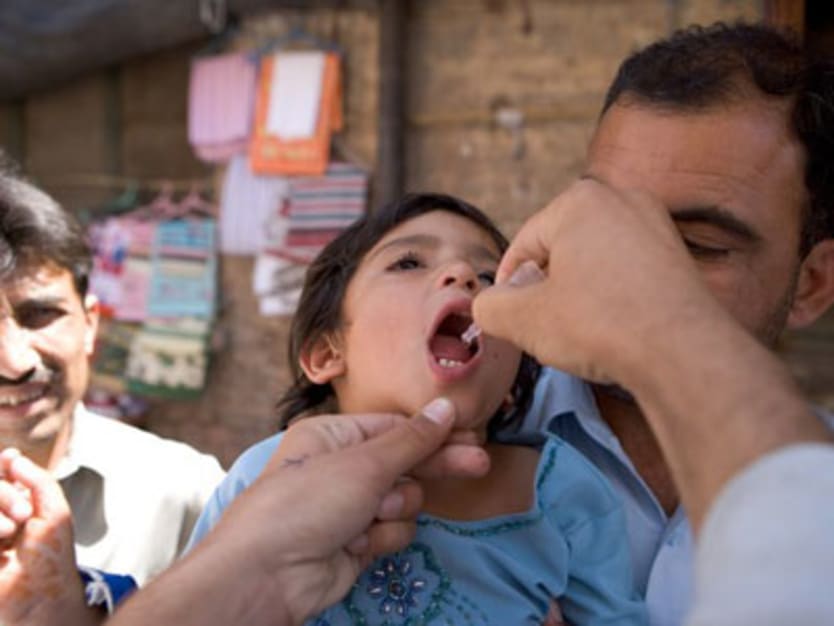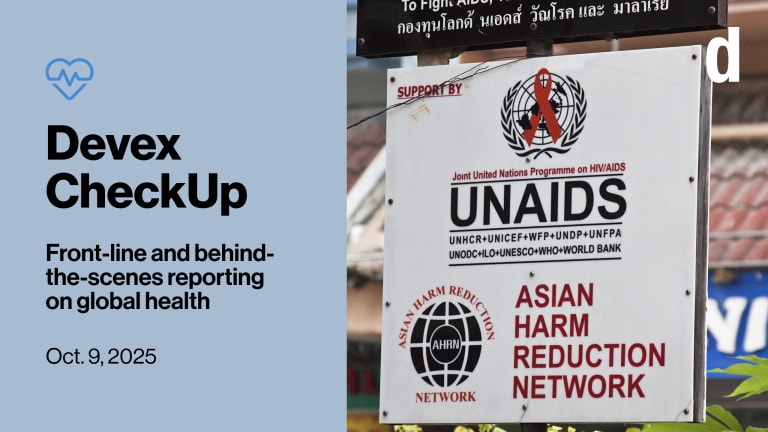
A new $5.5 billion plan spearheaded by the World Health Organization (WHO) claims it can rid the world of polio in the next five years, but can the goal be accomplished? Devex asks the WHO’s anti-polio arm for solutions.
The WHOGlobal Polio Eradication Initiative (GPEI)’s new Polio Eradication and Endgame Strategic Plan targets the end of all kinds of polioviruses by 2018, including the wild and rare vaccine-related strains, which cause paralysis among hundreds of children worldwide, a GPEI spokesperson said.
GPEI’s Sona Bari told Devex that this initiative has five major elements that set it apart from past plans:
Strategic approaches to all polio disease (wild and vaccine-related)
An urgent emphasis on improving routine immunization systems in key geographies
The introduction of new Inactivated Polio Vaccine options for managing long-term poliovirus risks and potentially accelerating wild poliovirus eradication
Risk mitigation strategies to address the emerging importance of new risks, particularly insecurity in some endemic areas and contingency plans if there is a delay in interrupting transmission in such reservoirs
Concrete timeline to complete the initiative
The plan is focused on developing and deploying a shot version of the anti-polio vaccine to replace the current oral variant, which is known to occasionally cause the same disease that it is supposed to prevent.
The plan will be implemented in the three remaining countries in the world where polio is still endemic — Afghanistan, Pakistan and Nigeria.
Lessons learned
These new strategies emerged from various stakeholder consultations done by GPEI and lessons learned in the past, such as:
1. One size does not fit all. In the past and according to the plan, “the program retained its existing approaches merely intensifying them, thereby missing opportunities to truly innovate, to refine tactics to the specific country context or to improve routine immunization”
Technological innovations alone cannot overcome gaps in program management and community engagement
A combination of innovations can succeed in the most challenging setting
Challenges
These lessons will be useful as GPEI gears up to deal with the remaining challenges, for instance, insufficient funding.
“Of the $5.5 billion [budget]… some [sources] have already been identified,” said Bari, adding that most of the amount is still unsupported.
Since the 2013-1018 plan identifies “inadequate funding” as a factor in the failure of previous programs, could the present shortfall threaten the success of the new plan?
Bari is confident that, in time, enough funding will be obtained, given GPEI’s involvement with various sectors and positive signals from donors.
Bari stressed that eradicating polio, an epidemic-prone disease, will be a “global win,” so its funding is “a global responsibility.”
GPEI will tap traditional donors as well as new sources of funding (including the three endemic countries themselves) while fostering financial engagements with donors in the Middle East, development banks and the private sector.
Another challenge is the security concern for frontliner vaccine workers in Pakistan and Nigeria. These countries have seen politically-inclined attacks against polio vaccine workers, most recently claiming nine lives in Nigeria in February.
“The security concerns are a complicating factor, and not a defining factor,” said Bari.
According to Bari, the issue is being dealt with by anti-polio groups working closely with law enforcement bodies at the sub-district level to help assess the safety of field workers before moving forward with vaccination efforts, of which the communities themselves have also been a part.
The WHO official said the attacks in Pakistan and Nigeria have seen much public outrage against attackers, with communities and religious leaders coming together to discuss their role in protecting vaccine workers and pushing forward vaccinations in their areas.
While the attacks have “significantly altered” the way anti-polio work is done there, Bari said that they “should not be used as an excuse” to stop the fight against polio.
The end of polio
On the heels of these challenges, Bari believes that the five-pronged framework of the new plan will be successful.
“I think so, because we have done analysis and modeling to come up with the plan,” said the GPEI spokesperson.
“Our tremendous success in India, once known as the most difficult place to eradicate polio, also gave us much confidence,” she added.
Bari concluded: “Polio eradication goes beyond health; it’s about reaching the marginalized; it’s social equity made concrete.”
Read more development aid news online, and subscribe to The Development Newswire to receive top international development headlines from the world’s leading donors, news sources and opinion leaders — emailed to you FREE every business day.








